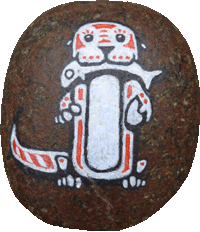The Kgalagadi Park is centred on two dry riverbeds (they flow once every hundred years or so) that have enough vegetation and watering holes to keep wildlife concentrated there. The rolling red sand dune landscape is best seen from Killiekrankie camp – an unfenced wilderness camp looked after by the scarily aloof but efficient Willem. The riverbeds are less picturesque, but there’s more chance of wildlife. 
That said, interesting viewings are scarce – we averaged two nifty things per day. This is of course entirely unfair on the herds of oryx, springbok, wildebeest and ostrich, or indeed on the black-backed jackals, pale chanting goshawks (nice name) and kori bustards that can be seen in abundance.
So what were our best sightings? Well, a big male Kalahari lion walked within two yards of the car (should we wind up the window? Would it even help?). We also got to see a trio of cheetahs attempting to hunt along the riverbed without success. But my favourite sighting was forty minutes spent watching a honey badger.
We also got to see a trio of cheetahs attempting to hunt along the riverbed without success. But my favourite sighting was forty minutes spent watching a honey badger.  These guys dig in the ground and around tree stumps for larvae and small animals, and despite only being a bit bigger than a UK badger they are so ferocious that lions and leopards won’t go near them out of fear.
These guys dig in the ground and around tree stumps for larvae and small animals, and despite only being a bit bigger than a UK badger they are so ferocious that lions and leopards won’t go near them out of fear.
One thing we didn’t get to see at Kgalagadi was the Martial Eagle, largest eagle in the world. But twenty minutes after driving south out of the park Maureen spotted one in a distant tree and we did a little cautious off-road driving to get a closer look.
This is the photo gallery for Kgalagadi.
Related Images:













































